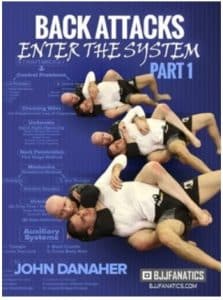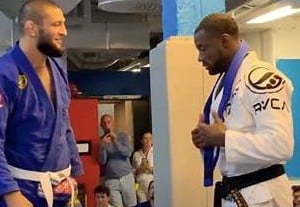John Danaher isn’t just a Brazilian Jiu-Jitsu black belt—he’s one of the most sought-after coaches and minds in modern grappling. Known for coaching athletes like Gordon Ryan and Garry Tonon, Danaher’s instructionals on BJJ Fanatics are a masterclass in systems thinking, precision, and layered learning.
But here’s the problem:
There are over 20 John Danaher instructionals. Most of them are massive.
So, where should you begin?
This guide breaks down his core series, explains the progression, and recommends the best starting points depending on your experience and goals.
Affiliate Disclosure: This article contains affiliate links. If you purchase them, I may receive a commission at no extra cost to you.
What Makes Danaher’s Instructionals Unique?
John Danaher teaches in long-form lectures, using exact terminology, positional logic, and flow-based thinking. He doesn’t just teach moves, he explains why they work and when to use them.
Expect:
- Deep conceptual frameworks
- Layered positional hierarchies
- Long instructionals (8+ hours is common)
Danaher’s content rewards active learners, note-takers, and serious grapplers who want more than just a highlight reel of techniques.
The Best John Danaher Instructionals for Beginners
If you’re starting, avoid jumping straight into heel hook systems or advanced back takes. Instead, build your base with these beginner-friendly instructionals:
1. Go Further Faster Series
Best for: White to blue belts, hobbyists, and anyone new to structured jiu-jitsu systems

Visit Go Further Faster Series
Overview:
This is the most beginner-friendly Danaher series. It covers the foundational pillars of grappling: guard retention, escapes, passing, pins, and submissions — all organized around his core positional theory.
- Designed to accelerate your understanding of core positions
- Explains the “why” behind every movement
- Builds a framework to plug other systems into later
2. Pin Escapes & Turtle Escapes: BJJ Fundamentals
Best for: Beginners who feel lost on the bottom or get crushed during rolls

Overview:
This is a goldmine if you’re often stuck under mount or side control. Danaher explains how to survive and escape from dominant top positions using leverage and timing instead of strength.
- Focuses on escaping bad positions
- Teaches universal defensive concepts like wedges, frames, and bridging mechanics
Intermediate Progression (Blue to Purple Belt)
Once you’ve digested the Go Further Faster content, you can build your game in any direction. Here are logical next steps:
3. Guard Passing: Dynamic Pinning Series
Best for: Grapplers developing a top game

Overview:
Danaher outlines his pressure-based passing strategy, which includes knee cut, smash passing, body lock, and top pins. You’ll learn how to break guard structure and maintain dominant positions.
4. Back Attacks: Enter the System
Best for: Anyone looking to increase finishing ability and master the most dominant position in BJJ

Overview:
This is Danaher’s most famous system. It shows how to take the back, secure control with diagonal mechanics, and finish with strangles and transitions.
Advanced & Specialist Systems (Purple+)
- Leg Locks: Enter the System – The legendary heel hook series that revolutionized modern no-gi
- Front Headlock System – A brutal guillotine and submission system from turtle/front headlock
- Half Guard System – For bottom players, building dynamic options from half guard
Final Thoughts: Where Should You Start?
For 90% of students, the answer is clear:
Start with the Go Further Faster Series.
It’s designed as a roadmap to modern BJJ — simple enough for beginners, deep enough for lifelong study. From there, choose your path based on what positions or outcomes you’re focused on.
Summary:
- Total beginner? Start with Go Further Faster or Pin Escapes
- Top game focus? Go to Guard Passing or Dynamic Pinning
- Submission finisher? Choose Back Attacks or Front Headlock
- Avoid: Leg lock systems until you understand positional fundamentals
The sooner you know how to think like John Danaher teaches, the sooner your jiu-jitsu will transform.
Explore His Instructionals Now




